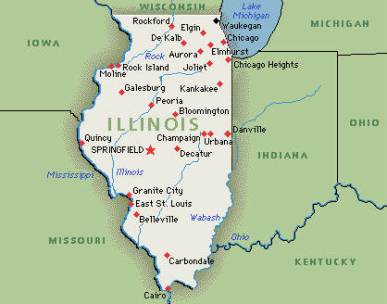
In the decade since it opened, Nicaragua RPCV Kathleen Mayer has transformed Carson into one of Chicago's best schools
A Valuable Lesson from Chicago; St. Louis School Administrators should look closely at Rachel Carson
Apr 19, 2004
St. Louis Post-Dispatch
by Robert Joiner
EDUCATION
I wish St. Louis School Board members and administrators had tagged along when I attended a recent national conference here on the role of superintendents and principals in boosting academic achievement. Sponsored by Columbia University's Hechinger Institute on Education and the Media, the seminar gave three dozen journalists a chance to hear scholars, superintendents, principals and teachers talk about what it's really like in the trenches of public education.
One particular presentation showed how principal Kathleen Mayer turned an unremarkable Chicago school, Rachel Carson Elementary, into a model for what public education can be. I couldn't help thinking it would have been helpful if the organizers had at least invited St. Louis schools acting Superintendent William V. Roberti to drop by, pull up a chair, chat a little but mainly listen.
Like the kids it serves, Carson seemed predestined to fail. It eventually wound up with eight gangs and plenty of discipline problems. It opened its doors with no books and no furniture. All of its 1,200 students were poor, and two-thirds of them spoke little or no English when they walked through the schoolhouse door for the first time a decade ago.
Mayer, an assistant principal at the time, used her credit card to buy $12,000 worth of books, and she found surplus furniture in other school buildings. Maybe she handled the situation the way she confronted shortages of books and supplies in a poor school in Nicaragua, where she was a Peace Corps volunteer for three years.
In any case, she hasn't looked back since that generous donation to a school for which she obviously had big plans. In the decade since it opened, Mayer has transformed Carson into one of Chicago's best schools. The gangs are gone, discipline problems are said to be rare and the student attendance rate of nearly 98 percent is the highest in the district.
Even though some classes contain 30 or more students, Carson's scores on the Iowa Test of Basic Skills are rising as the kids rise through the grades. That's just the opposite of what usually happens in schools in high-poverty areas. At Carson, 68 percent of eighth- graders met or exceeded the national average in reading, and 73 percent met or exceeded the national average in math.
So what are Carson's secrets, Roberti might have asked? A caring school environment, for one, along with strong parent-community ties to the school and a phonics-based reading program. But Mayer herself deserves most of the credit. Teachers and staff members report that she is a risk-taker willing to include them in decision-making. She has a reputation for making teachers feel valued. She encourages them to exercise leadership -- thus boosting their confidence -- and then follows up by asking how she can help them continue improving their job performance.
Something else struck me about the Carson model: It leaves little to chance when it comes to children. The way a student feels makes all the difference in the world in the way that student performs in class. Which is why the school has an intervention team that includes a counselor, a part-time psychologist, a nurse and a social worker to make home visits and assist the child in getting help for any home or health problems that might be interfering with learning.
Imagine bringing that kind of door-to-door service to poor families whose children attend St. Louis schools.
The only disappointing thing about Carson is that it is only one outstanding school, however remarkable, in an otherwise crumbling big-city district. That's the pattern across America, and it won't change until we get serious about figuring out how to make every school serving poor kids as good as or better than a Carson in Chicago or a Laclede School in St. Louis.
